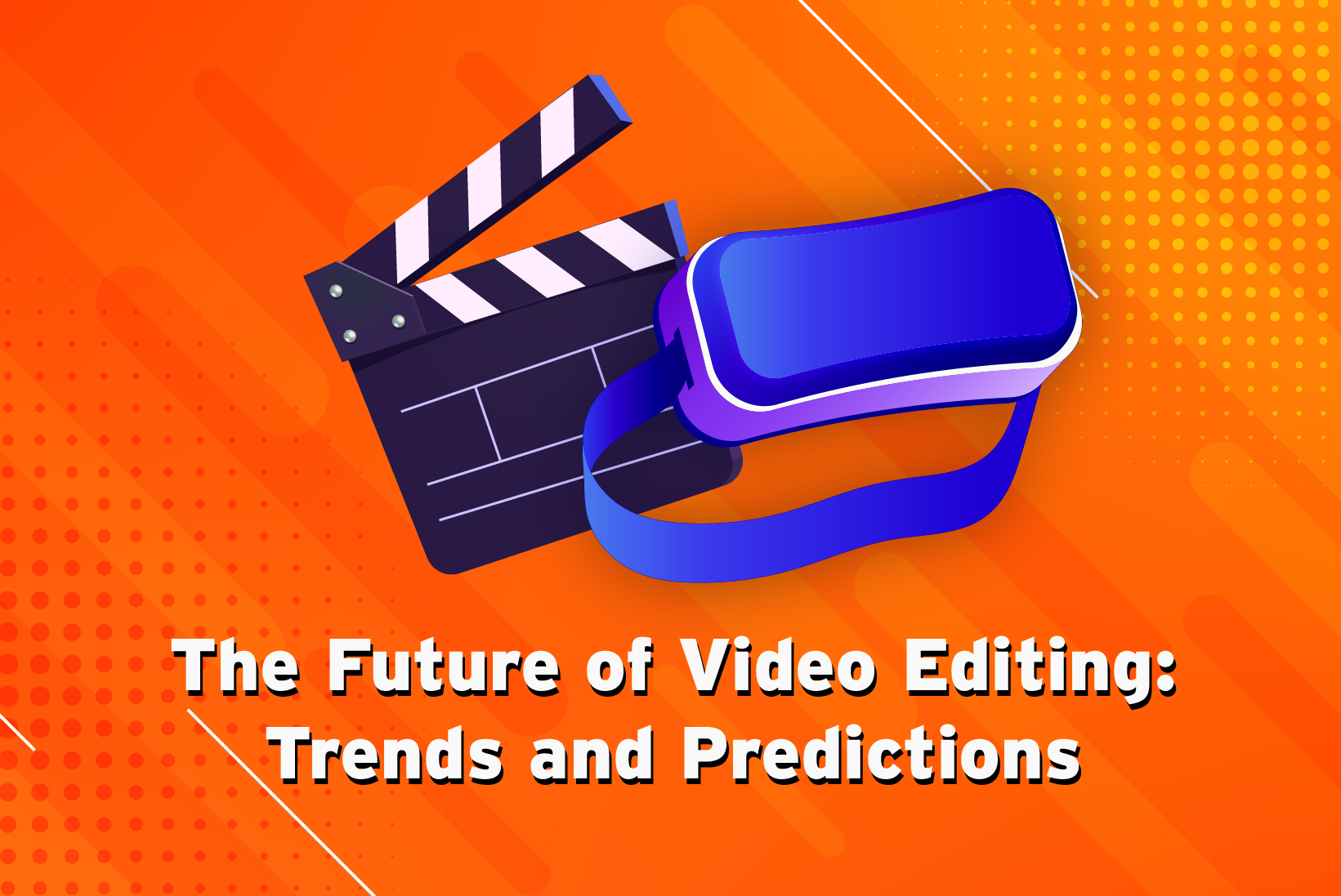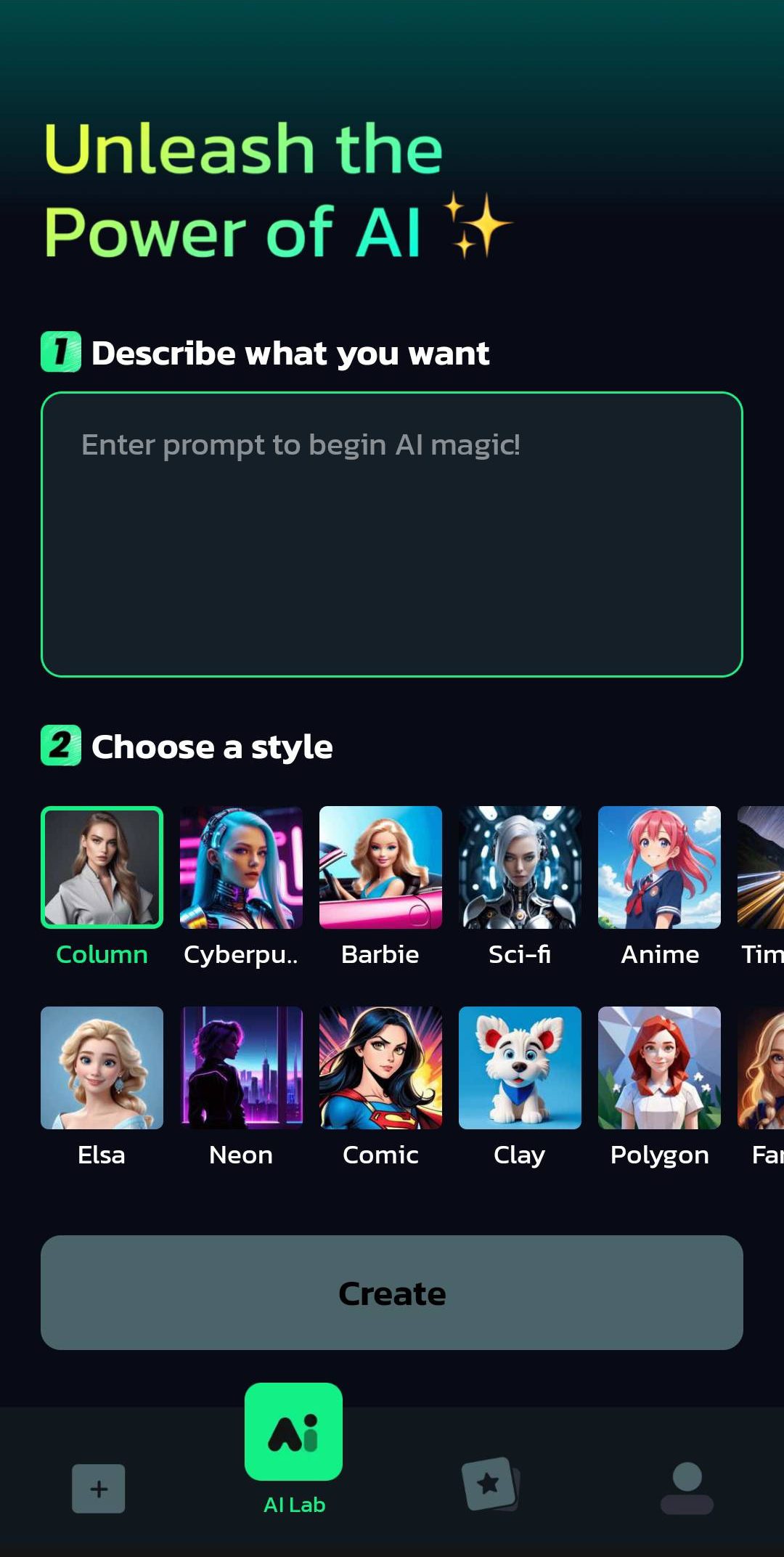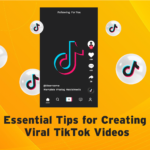
The Future of Video Editing: 7 Trends and Predictions
Video content has taken the world by storm, and the demand for high-quality, visually captivating videos is higher than ever before. From social media to marketing campaigns, educational resources, and entertainment, videos have become an integral part of our daily lives.
As video consumption continues to rise, the video editing industry is rapidly evolving to meet the ever-changing demands of creators and viewers alike.
In this blog post, we’ll explore the exciting trends and predictions shaping the future of video editing, shedding light on the innovative technologies and techniques that are poised to revolutionize the way we create and consume video content.
7 Trends and Predictions Shaping the Future of Video Editing
Let us take a quick peek into 2024 video editing trends!
1. Artificial Intelligence (AI) and Machine Learning (ML)
AI and ML are already making significant strides in the video editing realm, and their impact is only expected to grow. These technologies are being integrated into video editing software to automate and streamline various tasks, saving creators valuable time and effort.
One of the most promising applications of AI in video editing is intelligent editing assistance. AI algorithms can analyze video footage, identify key moments, and suggest optimal cuts and transitions, effectively taking the guesswork out of the editing process. Additionally, AI-powered tools can automatically enhance video quality, remove noise, stabilize shaky footage, and even upscale resolution.
Furthermore, AI is revolutionizing video creation itself. Tools like Synthesia and Runway can generate realistic human avatars and animations based on text or audio inputs, opening up new possibilities for content creators and revolutionizing fields like corporate training, education, and entertainment.
Vidma Editor, an intuitive video editing software, has tools with AI imbibed in its software to help people efficiently create videos on the go. With its user-friendly interface and extensive editing functions, Vidma Editor empowers beginners and professionals alike to create incredible music videos and social media videos instantly.

2. Integration of Motion Graphics and Visual Effects
Video editing is no longer just about cutting and arranging footage; it’s about creating compelling visual experiences that engage and captivate viewers. The integration of motion graphics and visual effects into video editing software is becoming increasingly seamless, empowering creators to add dynamic elements to their projects without the need for specialized software or advanced skills.
From animated titles and lower thirds to visual overlays and particle effects, modern video editing software is providing creators with a wealth of tools to enhance their projects and tell stories in more visually compelling ways.
Additionally, the integration of motion tracking and compositing capabilities allows editors to seamlessly blend live-action footage with computer-generated elements, opening up a world of possibilities for creating visually stunning and immersive content.
3. Cloud-Based Video Editing
As the demand for remote collaboration and accessibility increases, cloud-based video editing solutions are gaining traction. These web-based platforms allow creators to access their projects from anywhere, enabling seamless collaboration and real-time editing across multiple devices and locations.
Cloud-based video editing eliminates the need for powerful local hardware, as the processing and rendering tasks are handled on remote servers. This not only reduces the hardware requirements for creators but also ensures that their projects are securely stored and easily accessible, making it easier to work on-the-go or collaborate with teams across different locations.
Leading cloud-based video editing platforms, such as Adobe Premiere Pro and Blackmagic Design’s DaVinci Resolve, are already offering robust online editing solutions, and we can expect more players to enter this space in the coming years.
4. Virtual Reality (VR) and 360-degree Video Editing
As virtual reality technology continues to mature, the demand for immersive 360-degree video content is on the rise. From educational experiences to real estate tours and entertainment, VR and 360-degree videos offer a unique and engaging way to captivate audiences.
Video editing software is adapting to this trend by introducing specialized tools and workflows for creating and editing VR and 360-degree content.
Editors can now easily stitch together multiple camera angles, add spatial audio, and incorporate interactive elements to create truly immersive experiences.
Additionally, as VR headsets become more affordable and accessible, we can expect to see more creators experimenting with VR video editing, pushing the boundaries of what’s possible in this emerging medium.
5. Advanced Color Grading and HDR Support
Color grading, the process of enhancing and adjusting the color and tone of video footage, has long been an essential part of the video editing process. However, with the advent of High Dynamic Range (HDR) technology, color grading has taken on a new level of importance.
HDR videos offer a wider range of colors and increased contrast, resulting in more realistic and vibrant visuals. To fully leverage the capabilities of HDR, video editing software is incorporating advanced color grading tools and HDR support, allowing creators to fine-tune their footage and deliver stunning, true-to-life visuals.
As HDR technology becomes more widespread across various devices and platforms, we can expect color grading and HDR support to become increasingly crucial in video editing workflows, enabling creators to deliver visually stunning content that truly captivates their audiences.
6. Mobile Video Editing and Cross-Platform Workflows
With the rise of mobile content creation and social media platforms, the demand for powerful yet user-friendly mobile video editing solutions is skyrocketing. Video editing software providers are responding by developing mobile apps that offer robust editing capabilities while maintaining an intuitive and streamlined user experience.
These mobile apps are designed to seamlessly integrate with desktop editing software, enabling creators to start projects on their mobile devices and seamlessly transition to more advanced editing on their computers. This cross-platform workflow not only enhances productivity but also allows creators to capture and edit footage on-the-go, ensuring that no moment is missed.
Vidma Editor is a prime example of a mobile video editing app that simplifies the process of creating videos from photos and video clips on your mobile devices. Available on Android and iOS, Vidma Video Editor comes with an intuitive interface, empowering you to create incredible music videos and social media videos instantly, even if you’re a beginner in video editing. Just import your video clips, add titles & soundtracks, and you’ll be able to make videos with music, wherever you are.
As mobile devices continue to increase in processing power and camera capabilities, we can expect mobile video editing to become even more sophisticated, blurring the lines between desktop and mobile editing experiences.
7. Collaborative Editing and Real-Time
Feedback In today’s fast-paced world, collaboration and real-time feedback are becoming increasingly important in the video editing process. Video editing software is adapting to this trend by introducing features that facilitate seamless collaboration and real-time feedback loops.
Collaborative editing tools allow multiple users to work on the same project simultaneously, with changes being synchronized in real-time. This not only streamlines the editing process but also promotes creativity and efficient decision-making by enabling teams to provide instant feedback and make adjustments on the fly.
Furthermore, some video editing platforms are integrating live-streaming capabilities, allowing creators to share their editing sessions with remote clients or collaborators and receive real-time feedback and approval.
These collaborative editing and feedback features are revolutionizing the way teams work together on video projects, fostering efficient communication and enabling creators to deliver high-quality content faster than ever before.
Conclusion
The future of video editing is brimming with exciting possibilities and technological advancements. As the demand for captivating video content continues to grow, video editing software and workflows are evolving to meet the needs of creators and audiences alike.
From AI-powered editing assistants and cloud-based solutions to immersive VR experiences and advanced color grading capabilities, the video editing landscape is undergoing a transformation.
Additionally, the integration of motion graphics, visual effects, and cross-platform workflows is opening up new avenues for creativity and collaboration. As technology continues to push boundaries, video editing will become more accessible, efficient, and visually stunning, empowering creators to bring their visions to life in ways never before imagined.
Whether you’re a professional video editor, a content creator, or simply someone with a passion for visual storytelling, the future of video editing promises to be an exciting and ever-evolving journey. Embrace the trends and predictions, stay curious, and let your creativity soar – the possibilities are endless.
Vidma Editor is a free video editing app that simplifies the video editing process, making it accessible to creators of all levels. With its extensive editing functions and free resource library, Vidma Editor makes video editing quick and simple.
Join us as part of our Vidma Video Editor community and show us your masterpieces! For further information on this powerful video editing software, please visit https://editor.vidma.com/vidma-editor-2/.
Happy Editing!



